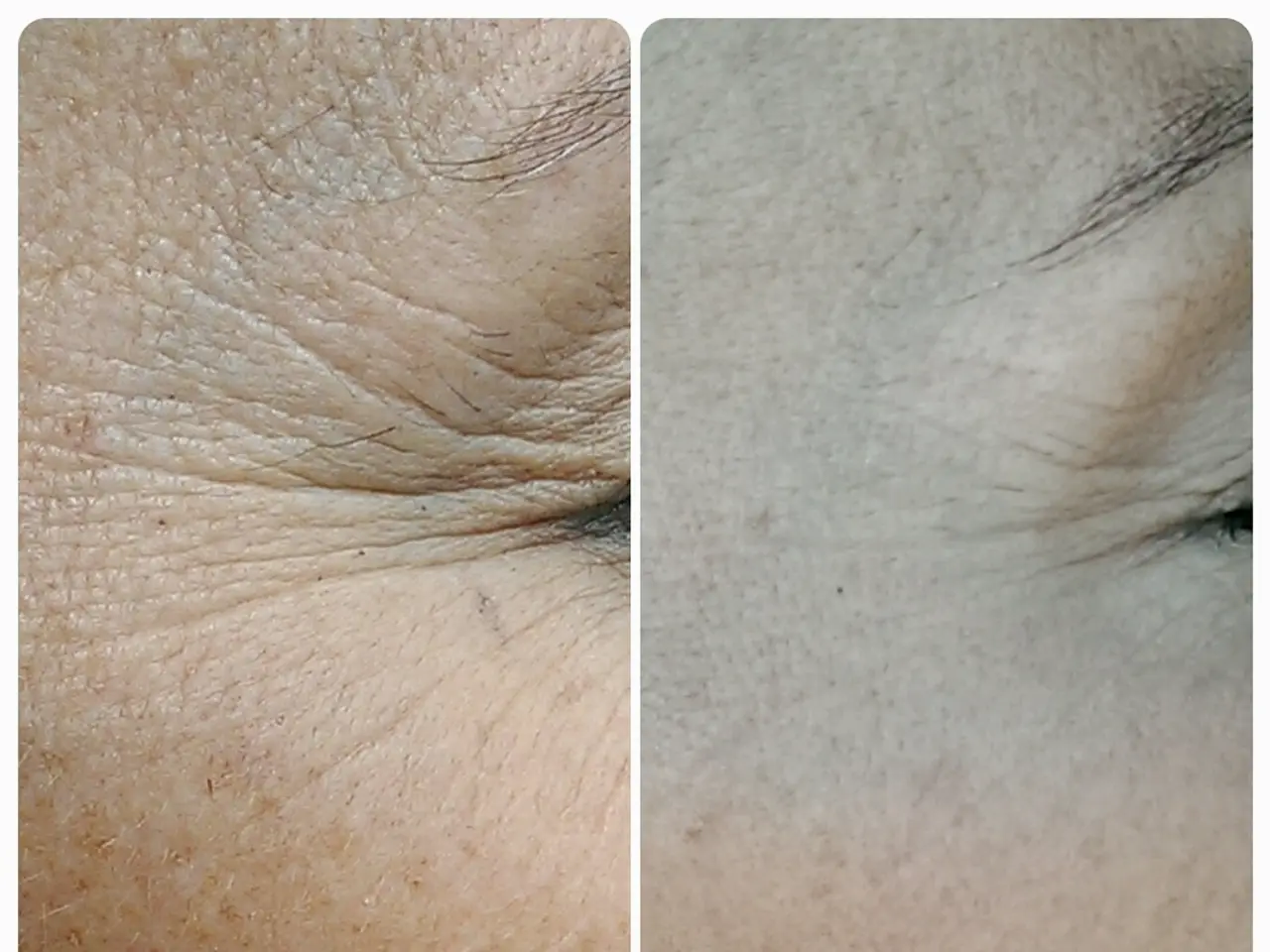Mohs Surgery: Advantages, Disadvantages, and Preparation Guidelines
Mohs surgery is a surgical technique developed by Dr. Frederic E. Mohs in the 1930s for treating skin cancer, especially those at high risk of recurrence or located in sensitive areas like the nose, lips, eyelids, or ears [1][2]. This method, which involves removing thin layers of cancerous skin one stage at a time, has proven to be an effective, tissue-sparing, and reliable treatment for certain types of skin cancers.
History
The roots of Mohs surgery can be traced back to the 1930s when Dr. Mohs developed this method as a solution for removing skin cancer while preserving as much healthy tissue as possible [1][2].
Process
During the procedure, the cancerous tissue is removed layer by layer. Each removed layer is carefully mapped, processed, and examined under a microscope during the surgery to check for remaining cancer cells. This cycle is repeated until no cancer cells are detected in the examined tissue margins [1][3][5]. The surgery is usually done under local anesthesia. Reconstruction or wound closure can be performed on the same day by the Mohs surgeon or a plastic surgeon using sutures or other methods depending on the wound size and location [1][3].
Benefits
The benefits of Mohs surgery include the highest cure rates for non-melanoma skin cancers due to comprehensive microscopic examination of 100% of the surgical margin [2][5]. The tissue-sparing technique minimizes removal of healthy skin, resulting in smaller wounds and less scarring, which is particularly important in cosmetically sensitive or functionally critical areas [1][4]. Immediate analysis and removal also avoid the need for multiple surgeries or waiting for pathology reports [5].
Risks
As with all surgeries, potential risks include infection, bleeding, pain, and delayed wound healing. Scarring can occur but is usually minimized due to the tissue-sparing technique. Rarely, more complex reconstruction may be required if a large area is involved [3][5]. Specific risks depend on tumor location and patient factors and should be discussed preoperatively.
Recovery
Initial downtime typically ranges from 1 to 2 weeks, with light activity encouraged to aid healing [3]. Healing time varies with wound size and repair method; wounds can heal by secondary intention or surgical closure with sutures, the latter usually resulting in faster healing and less noticeable scars [1][3]. Most patients return to normal daily activities within 4 to 6 weeks [3]. Follow-up care is important to monitor healing and detect any possible recurrence early [3].
In some cases, the wound may need reconstruction with a skin flap or skin graft from another part of the person's body. Removing the first specimen during Mohs surgery takes only a few minutes. Mohs surgery is an outpatient procedure that surgeons perform under local anesthesia.
The cure rate for new skin cancers exceeds 99% according to the American College of Mohs Surgery. Mohs surgery is the most effective technique for treating basal cell carcinomas (BCCs) and squamous cell carcinomas (SCCs). It can also treat rarer forms of skin cancer, such as dermatofibrosarcoma protuberans, extramammary Paget's disease, and Merkel cell carcinoma.
The Skin Cancer Foundation recommends Mohs surgery to treat BCCs or SCCs that appear around the eyes, nose, lips, ears, scalp, fingers, toes, or genitals. Mohs surgery is a surgical procedure developed by Frederic Mohs, M.D., for treating skin cancer.
Before undergoing Mohs surgery, it is essential to discuss allergies, existing health conditions, and current medications with a doctor, especially for those with preexisting cardiovascular disease [6]. Complications that can occur with Mohs surgery include cosmetic or functional abnormalities, enlarged scar or keloid, pain or tenderness, discoloration, bleeding, scarring, infection, allergic reaction, and nerve damage [3][5].
References:
[1] American Academy of Dermatology. (n.d.). Mohs Surgery. Retrieved from https://www.aad.org/dermatology-a-to-z/procedures/mohs-surgery
[2] American College of Mohs Surgery. (n.d.). What is Mohs Surgery? Retrieved from https://www.acms.org/patients/what-is-mohs-surgery
[3] Mayo Clinic. (2021, February 17). Mohs surgery for skin cancer. Retrieved from https://www.mayoclinic.org/tests-procedures/mohs-surgery/about/pac-20384765
[4] Skin Cancer Foundation. (n.d.). Mohs Micrographic Surgery. Retrieved from https://www.skincancer.org/treatment/mohs-micrographic-surgery/
[5] Skin Cancer Foundation. (n.d.). Mohs Micrographic Surgery: What to Expect. Retrieved from https://www.skincancer.org/treatment/mohs-micrographic-surgery/what-to-expect/
[6] Skin Cancer Foundation. (n.d.). Preparing for a Mohs Surgery Procedure. Retrieved from https://www.skincancer.org/treatment/mohs-micrographic-surgery/preparing-for-a-mohs-surgery-procedure/
- Mohs surgery, grounded in science and health-and-wellness, provides patientcare in the treatment of various medical-conditions, such as basal cell carcinomas (BCCs) and squamous cell carcinomas (SCCs), even rarer skin conditions like dermatofibrosarcoma protuberans and Merkel cell carcinoma.
- In the realm of skin-care, Mohs surgery stands out for its tissue-sparing technique, ensuring minimum skin removal and less skin-conditions resulting from the procedure, which is crucial in cosmetically sensitive areas.
- Post-surgery, patients can focus on health-and-wellness and health-related wellness through proper wound care and following the recommended recovery process, ensuring a smooth transition back to their usual lifestyle.




